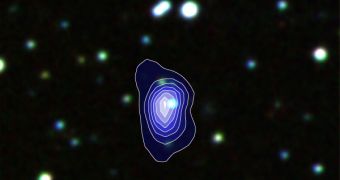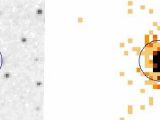Yet another exploding star was discovered in the Milky Way galaxy by Europe's X-ray space observatory, XMM-Newton, during a slew survey. It should have been spotted several days before the actual discovery by the thousands of astronomers throughout the world. According to estimations, the event should have been easily visible with the naked eye as it was one of the brightest nova events in the last decade. Somehow, nobody saw it.
While changing from one target to another, the XMM-Newton telescope executes a so-called slew survey involving a systematic processing of the collected data. As it did so on October 9, 2007, it detected an unknown bright source of X-ray, emitting some 50 X-ray every second.
The source appeared to be a faint star previously known as USNO-A2.0 0450-03360039, a white dwarf that had increased its brightness by more than 600 times. As it turned out, the object went 'nova'. White dwarf stars explode when they draw material from a companion star. As material accumulates in the upper layers of the object, it starts initiating nuclear reactions, releasing large amounts of energy and light.
However, observations showed that the nova explosion should have taken place several days before the discovery, thus posing the question of whether the XMM-Newton saw it as it was taking place. Researchers argue that when the explosion occurred, a great deal of debris was thrown into space, blocking out the X-ray wavelengths until the sky cleared and XMM-Newton was able to observe them. Nevertheless, this still doesn't explain why one of the brightest nova explosions of the last decade was not spotted by astronomers.
Richard Saxton of ESA's European Space Astronomy Centre, along with Andy Read of the University of Leicester, found the source of the X-ray emission, and then contacted the robotic survey project ASAS and asked them to check their data. ASAS indeed revealed that the robotic survey spotted the bright event on June 5, 2007 and confirmed that it would have been visible from Earth with the naked eye. "Anyone who went outside that night and looked towards the constellation of Puppis would have seen it," says Saxton.
"Suddenly there was all this data being collected about the star. For variable star work like this, the contribution of the amateur community can be at least as important as that from the professionals," says Read regarding the frenzy unleashed by the announcement that a new nova had been discovered by XMM-Newton.

 14 DAY TRIAL //
14 DAY TRIAL // 
